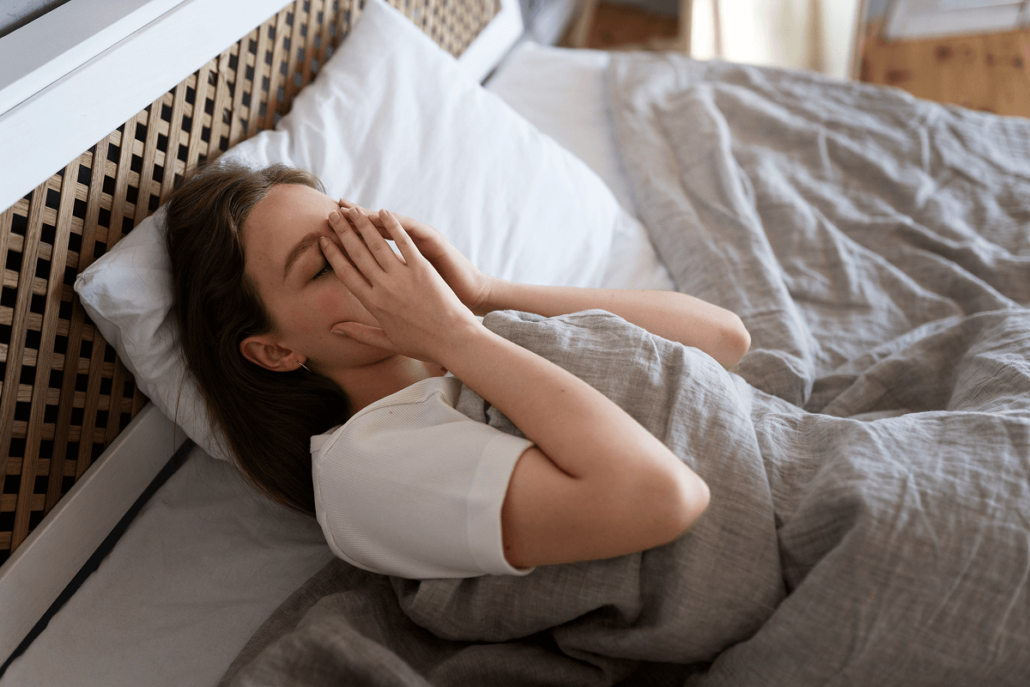Sleep expert and educator Terry Cralle, RN, offers these suggestions and steps you can take to improve your sleep no matter the position.
Good news for side snoozers
While there are many variations of sleeping on your side, all of which are beneficial in helping to alleviate insomnia and chronic sleep deprivation, the most comfortable position involves bending the knees slightly upward toward the chest. If you have a bad back, consider placing a pillow between your legs to alleviate pressure on your hips and lower back. Sleeping on your side is encouraged for those suffering from back or hip pain. It’s also recommended for pregnant women, specifically the left side.
Sleeping better on your back
If you prefer to sleep on your back, be careful, as it may induce lower back pain and even episodes of apnea, which interfere with normal sleep and restfulness. However, there are a few minor alterations to this position you can make to sleep more soundly: Try placing a soft pillow or rolled-up towel under your knees to facilitate the natural curve of the spine.
Cautions for stomach sleepers
If you like sleeping on your stomach, you’re in for a bit of bad news: Sleep professionals don’t recommend sleeping on your stomach as it causes strain on your lower back and possible neck pain. People who sleep on their stomachs report increased restlessness caused by frequent tossing and turning in an effort to get comfortable. If you do sleep on your stomach, use an extremely soft pillow or none at all, so your neck won’t be at an awkward angle.
So how do Americans sleep – and what might that reveal about them? Below, the BSC shares insights from a nationwide survey of sleep positions.
| Sleep Positions | |
 |
Fetal position: Turns out, many of us still sleep like we did when we were infants. A whopping 47% of all Americans sleep in this curled-up manner and it’s considered the most common sleep position. Women are also more likely to sleep in this position compared to men (54% vs. 39%) and 37% of Americans believe it is the best sleeping position. |
 |
Freefall position: People who lie on their stomachs, with their heads turned to the side and their arms under or wrapped around a pillow, comprise 17% of the population studied. Despite being the second most popular sleeping position, about one-quarter (26%) of all Americans consider it the worst sleeping position. Introverts also report having the strongest aversion to this position, so try not to ask them too many questions about it! |
 |
Yearner position: Can’t find the right sleeping position for you? If you’re yearning for a good night’s sleep, look no further than the Yearner position (no pun intended.) A close third – with 13% of Americans sleeping this way – the position consists of lying on your side with both arms out in front of your body. If you’re interested in this position, try talking to a Baby Boomer, as they are more likely to sleep like this than Millennials and Gen Xers. |
 |
Soldier position: A soldier may be a person who serves in the military, but it’s also the name of the fourth most common sleeping position, preferred by 11% of the population studied. Those who lie on their backs with their arms down and close to the body when they sleep are more likely than those who sleep in the Fetal, Freefall or Yearner positions to either not change positions or only change positions once. They are also more likely to say they sleep this way, along with Log and Starfish sleepers, because it has medical benefits. |
 |
Starfish position: For all you sea lovers out there, you’re in luck. Sleepers who prefer to sleep like marine invertebrates account for 7% of the population studied. Like the Log and Soldier positions, these sleepers are more likely than those who sleep in the other positions to say they sleep that way because it has medical benefits. However, these sleepers, who lie on their backs with arms up near their heads or pillows, along with Log sleepers, are more likely to sleepwalk. |
 |
Log position: A log is more than a hunk of wood that you throw on a fire to keep you warm. It’s actually one of the six main sleeping positions, and 6% of the population sleeps this way. Despite being the least popular sleep position, those who sleep on their sides with both arms down consider themselves healthier than those who sleep in the other positions. |



